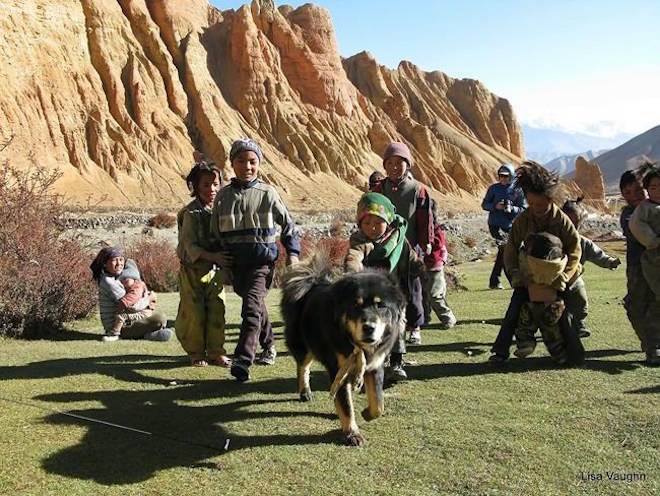Two dog breeds recently added to the American Kennel Club’s pack are not recognized north of the border, but the Canadian Kennel Club is hoping to add 12 others that are gaining popularity with dog lovers.
Andrew Patton, spokesman for Canada’s primary registry for purebred dogs, says 2018’s incoming class could include the Portuguese sheepdog, Tibetan mastiff, rat terrier and Spanish water dog, if they get the stamp of approval from Agriculture Canada.
But they don’t include the Nederlandse kooikerhondje or the grand basset griffon Vendeen, recently added by the American Kennel Club.
“We don’t recognize them only because no club has organized here in Canada and taken the initiative,” said Patton, whose agency also guides responsible owners and breeders.
The Canadian club’s members are championing several other breeds instead.
Proposed additions include the Anatolian shepherd, Australian kelpie, black Russian terrier, and Finnish lapphund. Then there’s the Glen of Imaal terrier, lagotto Romagnolo, mudi and Shikoku.
They would be the first additions since 2004, when the club welcomed 12 more breeds. Patton said Thursday that he expected the additions to be confirmed by Agriculture Canada by the summer.
“They’re super busy with other stuff, I think the file is sitting on someone’s desk and we just need the rubber stamp,” said Patton, adding it’s rare for a submission to be rejected. “They usually are very good about that.”
The Canadian kennel currently recognizes 175 breeds. Patton admitted to liking some more than others.
“The Glen of Imaal terrier is perhaps the ugliest terrier on the list, perhaps of all the dogs we register. I probably shouldn’t say that but that’s just my opinion,” he said, listing various attributes among the likely new additions.
“The Spanish water dog is surprisingly a lot like a Portuguese water dog, but it’s more kind of slightly more refined and it’ll never be as popular, obviously, as the Portuguese water dog, thanks to Mr. Obama. But it’s still a fascinating breed,” he said, referencing the former U.S. president whose family obtained two dogs while in office.
The Nederlandse kooikerhondje (pronounced NAY’-dehr-lahn-seh KOY’-kehr-hahnd-jeh) goes back hundreds of years in Holland. The smallish, brown-and-white, spaniel-style dogs were trained to help hunters attract ducks into net-covered canals.
Patton said the breed is relatively little-seen here, but it is one of the sources for the Nova Scotia duck tolling retriever, well-established in North America.
“They’re super smart, super friendly, great family dogs but they’re pretty high energy because they’re hounds. Any hound is going to have a bit of an attitude.”
He didn’t know much about the grand basset griffon Vendeen but said the small version — the petit basset griffon Vendeen — is also fairly well-known in Canada.
“It’s a French scent hound that’s pretty established. They’re not hugely popular, but they are present, they’re always present,” said Patton, speculating that its larger cousin could one day be recognized here, too.
Toronto dog lover Neil Trilokekar said he’s eager for Tibetan mastiffs to gain official recognition, partly because that would allow him to compete at dog shows closer to home.
The only time he’s shown a Tibetan mastiff is in the United States. In Canada, he competes with Lhasa apsos.
“It would certainly be nice, I don’t have to travel as much or as far but, again, I might not have competition here,” said Trilokekar, a spokesman for the Tibetan mastiff breed in Canada.
“It’s better to have competition on the breed level…. You’d want a few dogs (to compete with).”
Patton said non-recognized breeds can compete in Canada as long as they meet certain criteria, but it can involve additional red tape.
Getting official recognition has other benefits — namely the ability to better track the progeny of specific dogs, making it easier for breeders to assess heritage and quality, he added.
Cassandra Szklarski, The Canadian Press
Like us on Facebook and follow us on Twitter.



